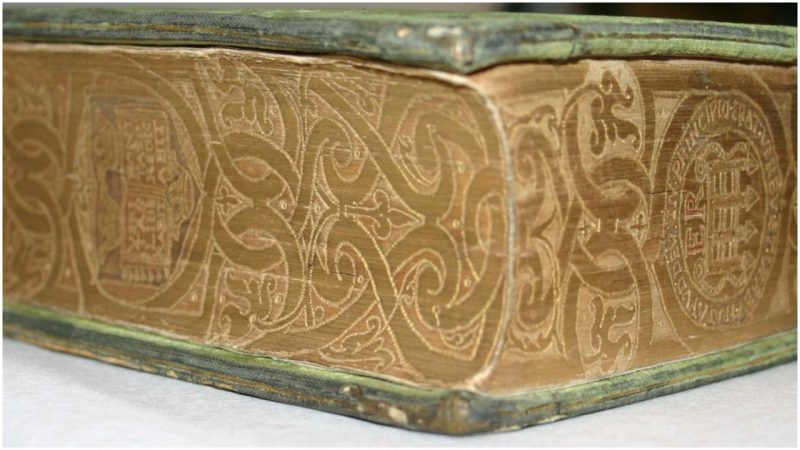Gutenberg’s 15th-century revolutionary invention of the printing press took the production of books to another level, not only widely disseminating knowledge but also prompting artists and bookbinders to embellish book covers with various designs and illustrations. Books’ edges developed sometime later, mainly characterized by the unique technique of fore-edge painting.
Bookbinders and designers define three edges and a spine in a book. Two are, obviously, the top and the bottom edge; however, the edge at the opening of a book is referred to as the fore-edge. Originally, the fore-edge of a book was covered with ink in order for the book to be easily identified when stacked among other books, with the edge facing outwards.
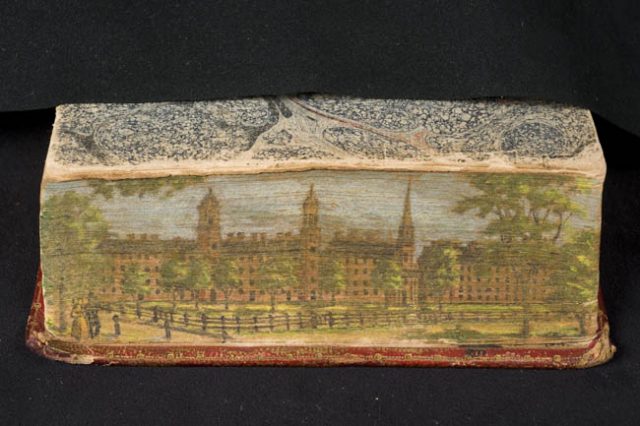
If the fore-edge painting is on the fanned page block, where an image is applied to the stepped surface, the image vanishes when the book is relaxed. When the book is fanned once again, the painting magically re-appears. This almost obscure art form is hidden under a golden surface. When revealed, it delights with its magical images which suddenly transform the book into a real visual work of art.
The beginnings of this idea go back to the 1500s, when Cesare Vecellio, a Venetian artist, developed a technique that allowed enhancing books by painting on their edges. Most of the painted images were portraits that appeared when the book was closed. A century later, the art of the “disappearing painting” was introduced by an English bookbinder, Samuel Mearne, practicing the same idea.
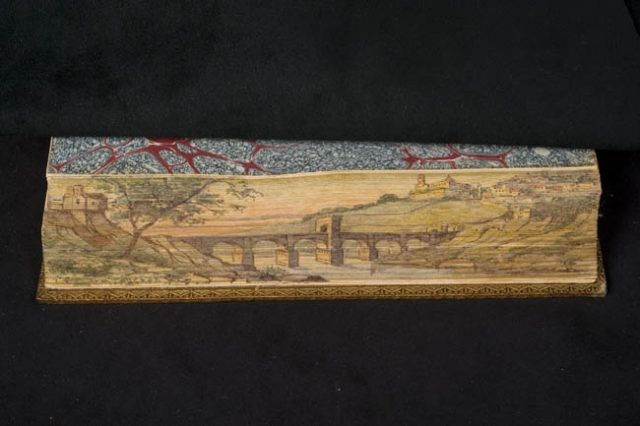
In the late 18th to the 19th century, fore-edge painting became extremely popular in England. This surge of interest was observed by the bookbinding company Edwards of Halifax which employed a number of artists who painted romantic scenes on the fore-edges.
These books were further placed in luxurious leather bindings or painted vellum covers. Most of the artists in the binding companies worked as ghost painters, that is, they never signed their names. Later, this aggravated the work of historians when examining the origin and date of the hidden paintings.

However, some artists did leave a personal mark. In the early 19th century, Taylor & Hessey stamped their signature on the binding, as did their fellow binder colleague John Fazakerly from Liverpool at the end of the century, combining gold embossing with colorful decorations which were easy to identify.
At the beginning of the next century, the painter Miss C. B. Currie painted and signed her fore-edges, which were placed upon bindings with painted ivory. The rest of the paintings are, in general, recognized exclusively by their design. Some artists worth mentioning are the “Thistle” and the “Dover” fore-edge painters, whose work was presented unsigned. The careful observation and study of these revealed many details and peculiarities of their personal style.
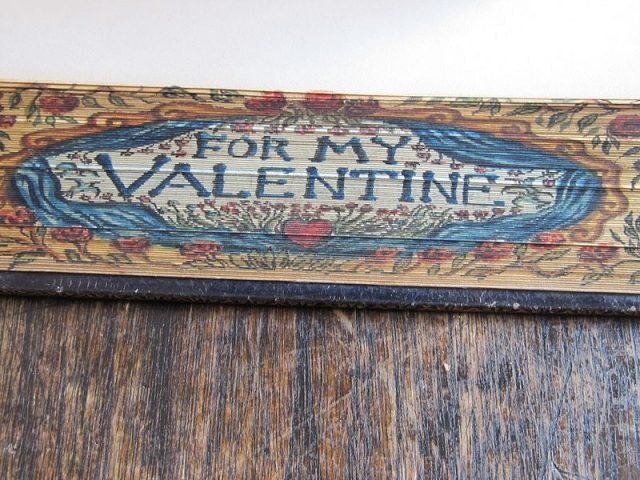
From today’s point of view, it can be said that fore-edge painting is an endangered art form due to the rapid mass production of books. Though most of the examined and presented fore-edge exemplars are antiquarian books from earlier than the 19th century, there are contemporary dedicated enthusiasts who support and prolong the life of this amazing technique. The only full-time fore-edge painter today is Martin Frost, who has painted 3,500 books in the last 40 years.
According to Frost’s statement in an interview for Vision and Technology, nothing can stop a fore-edge aficionado like him from working on modern books such as Harry Potter and the Goblet of Fire. His passion resulted in putting this book into a special binding and covering it with a sparkly, star-spangled foil finish instead of gold.
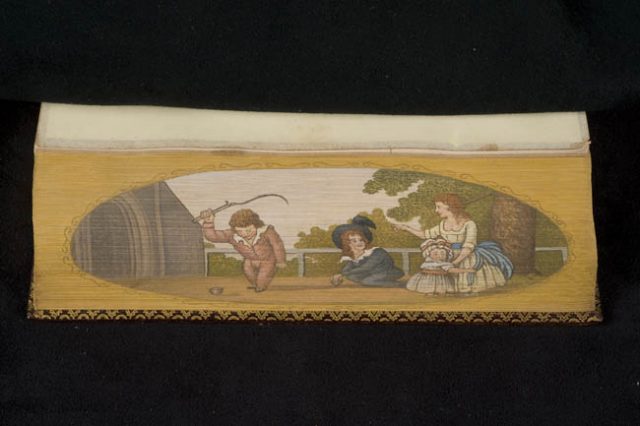
This book edition hides a painting that presents Dumbledore and the goblet of fire itself, and when closed, it vanishes into the sparkly foil. Frost also reveals that he loves to be challenged by the books he works on, so he considered Harry Potter books appropriate as the stories contain numerous fine images he could work with. His work is put on sale for the interested collectors and buyers on his website foredgefrost.co.uk
A number of fore-edge wonders can be seen at the outstanding exhibition in the Boston Public Library. This library contains a treasure of 258 books, donated by Albert H. Wiggin in 1951.
